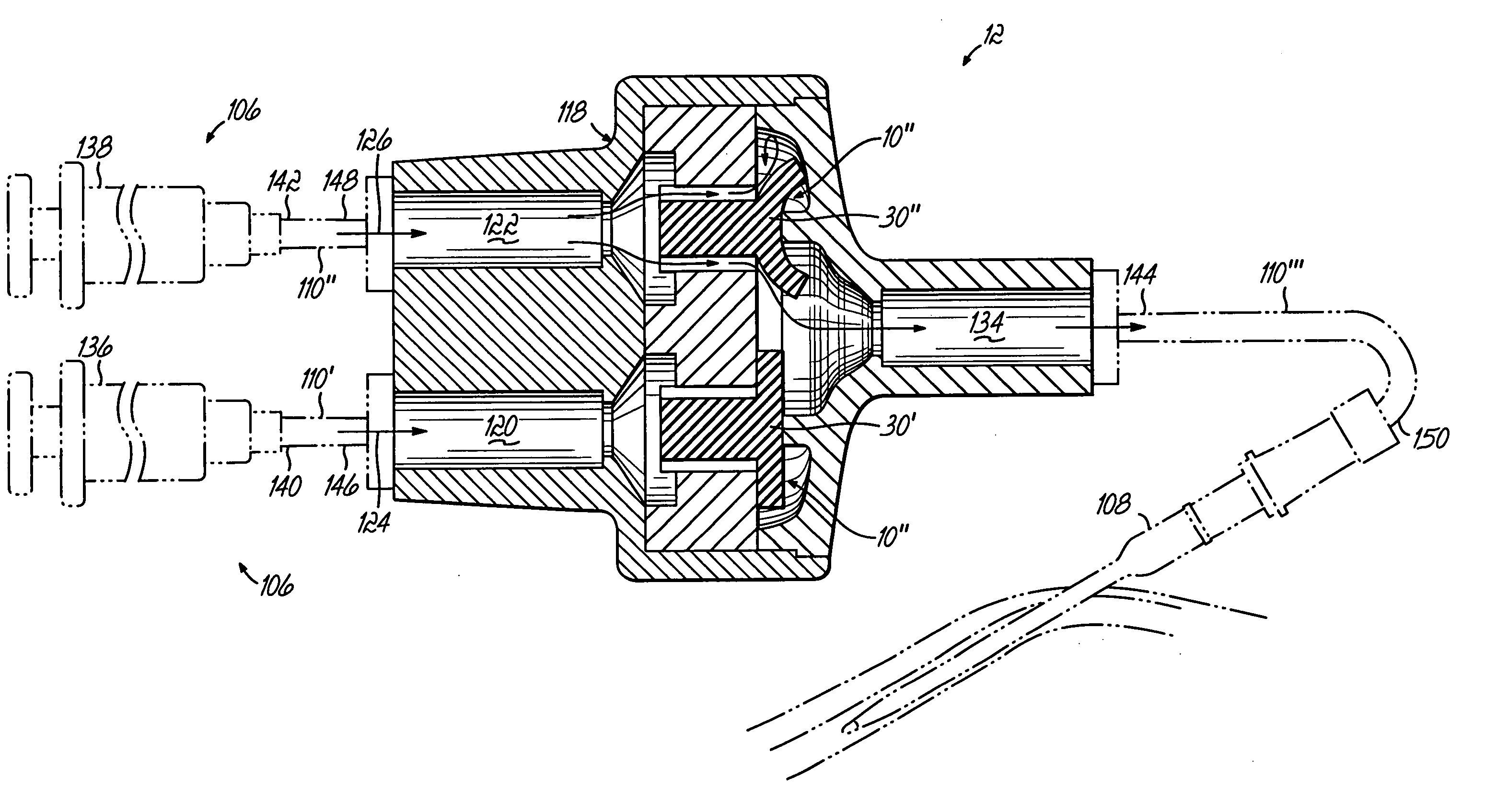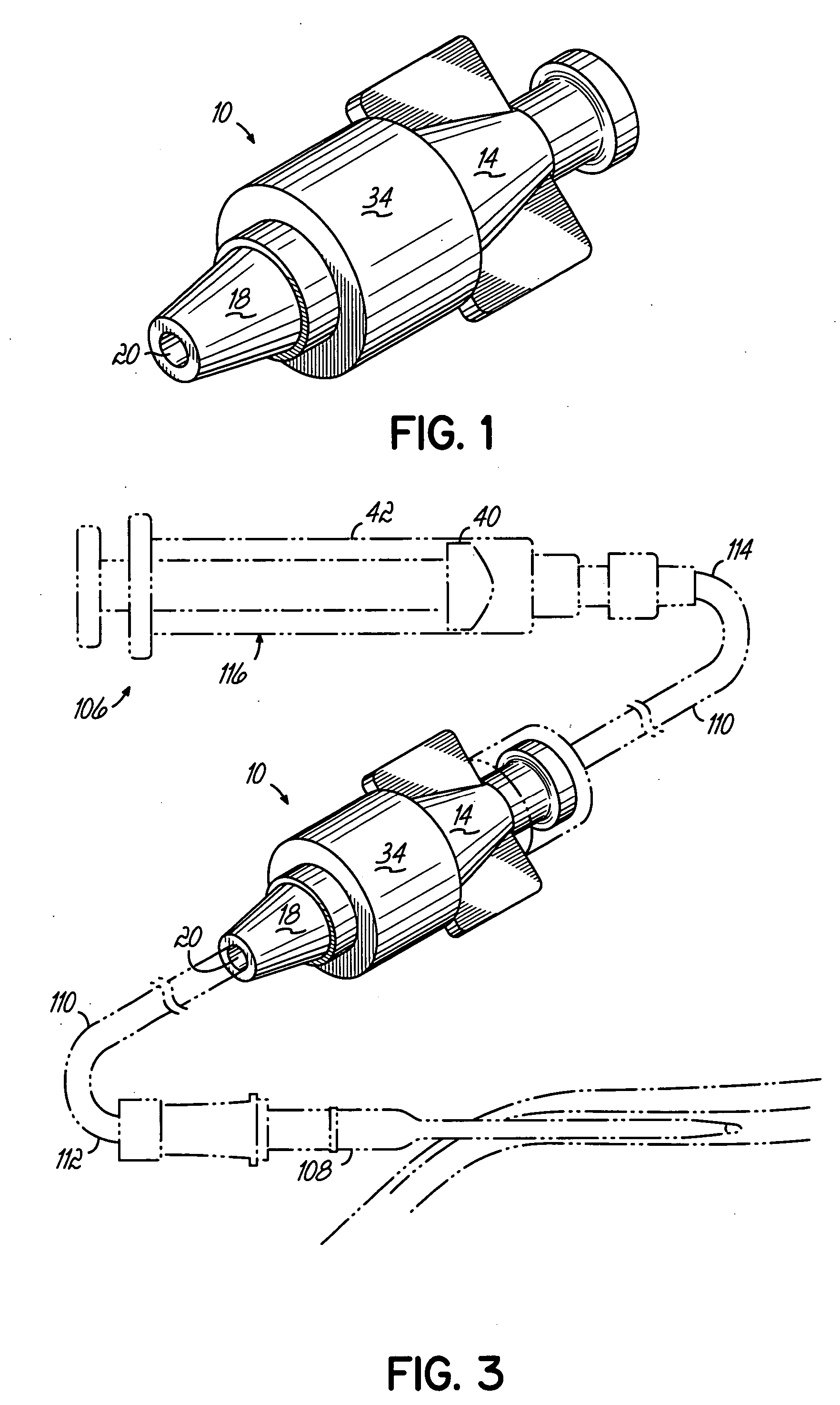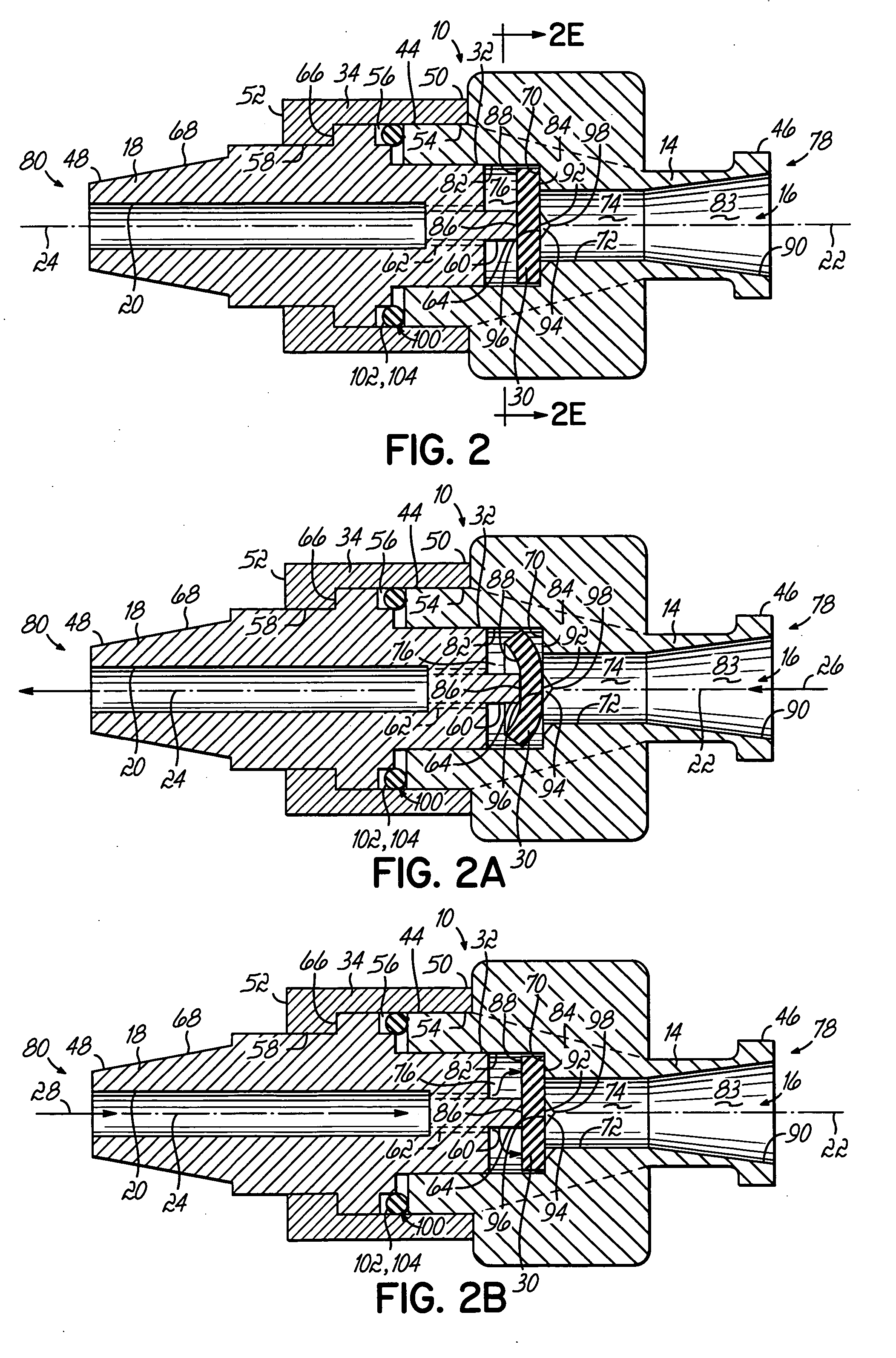Check valve for a fluid administration system
- Summary
- Abstract
- Description
- Claims
- Application Information
AI Technical Summary
Benefits of technology
Problems solved by technology
Method used
Image
Examples
Embodiment Construction
[0039] Referring now to the Figures, the present invention overcomes the drawbacks with current fluid administration systems, as described above in a first aspect, by providing a check valve 10 which may be activated to allow for reversal of fluid flow in order to enhance the operation of a fluid administration system. In particular, the check valve 10 may be selectively adaptable to either allow or not allow fluid flow from a fluid output, to a fluid input, through or past the check valve 10. The present invention, in a second aspect, provides a connector 12 that may be used in a fluid administration system. The connector 12 includes a check valve 10 to reduce and eliminate dead zones which exist in prior art connectors of fluid administration systems.
[0040] Referring to FIGS. 1-3, in one aspect, the present invention provides a check valve 10 in a fluid administration system which is normally closed to allow fluid flow in a single direction, but which may be selectively opened in...
PUM
 Login to View More
Login to View More Abstract
Description
Claims
Application Information
 Login to View More
Login to View More - R&D
- Intellectual Property
- Life Sciences
- Materials
- Tech Scout
- Unparalleled Data Quality
- Higher Quality Content
- 60% Fewer Hallucinations
Browse by: Latest US Patents, China's latest patents, Technical Efficacy Thesaurus, Application Domain, Technology Topic, Popular Technical Reports.
© 2025 PatSnap. All rights reserved.Legal|Privacy policy|Modern Slavery Act Transparency Statement|Sitemap|About US| Contact US: help@patsnap.com



